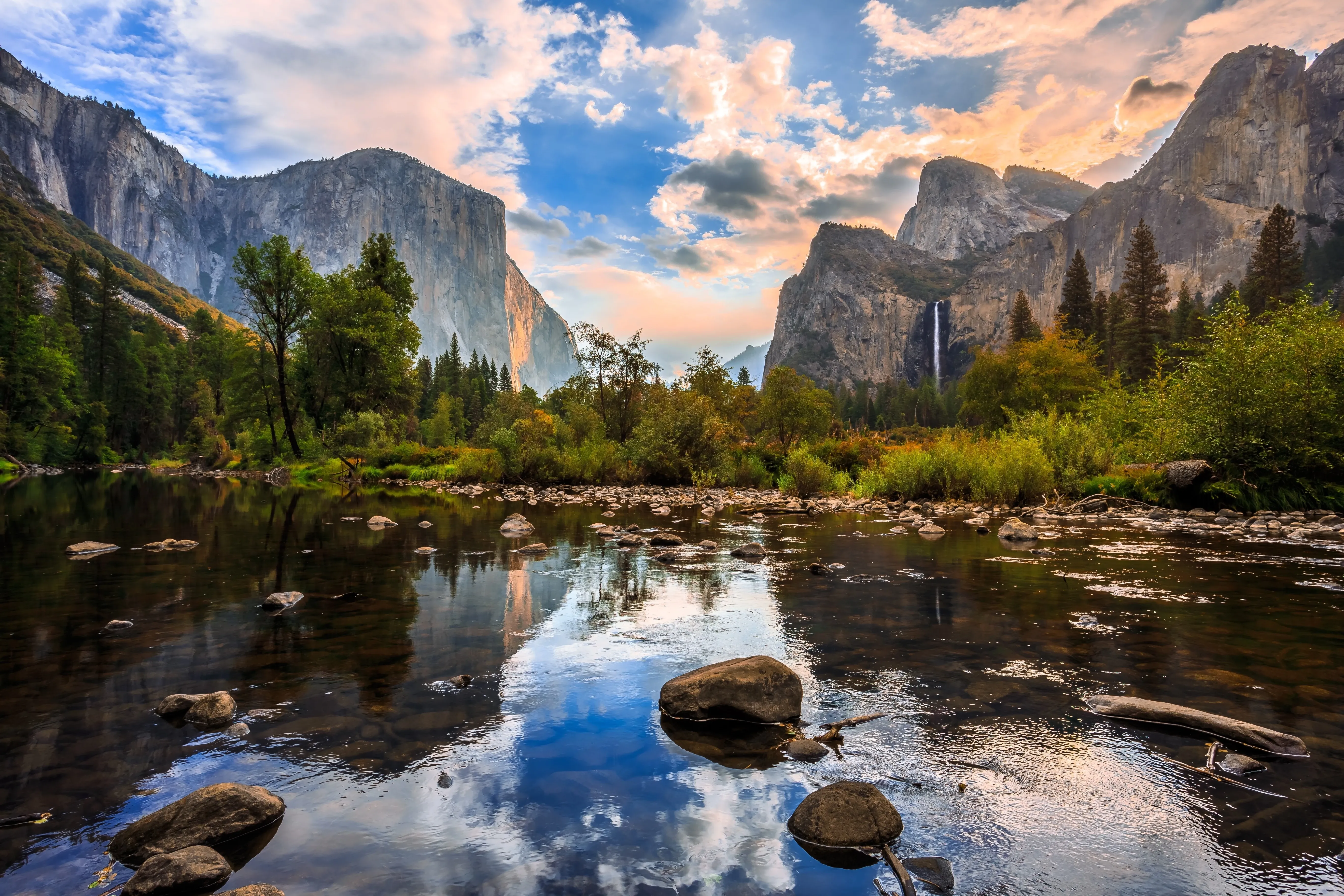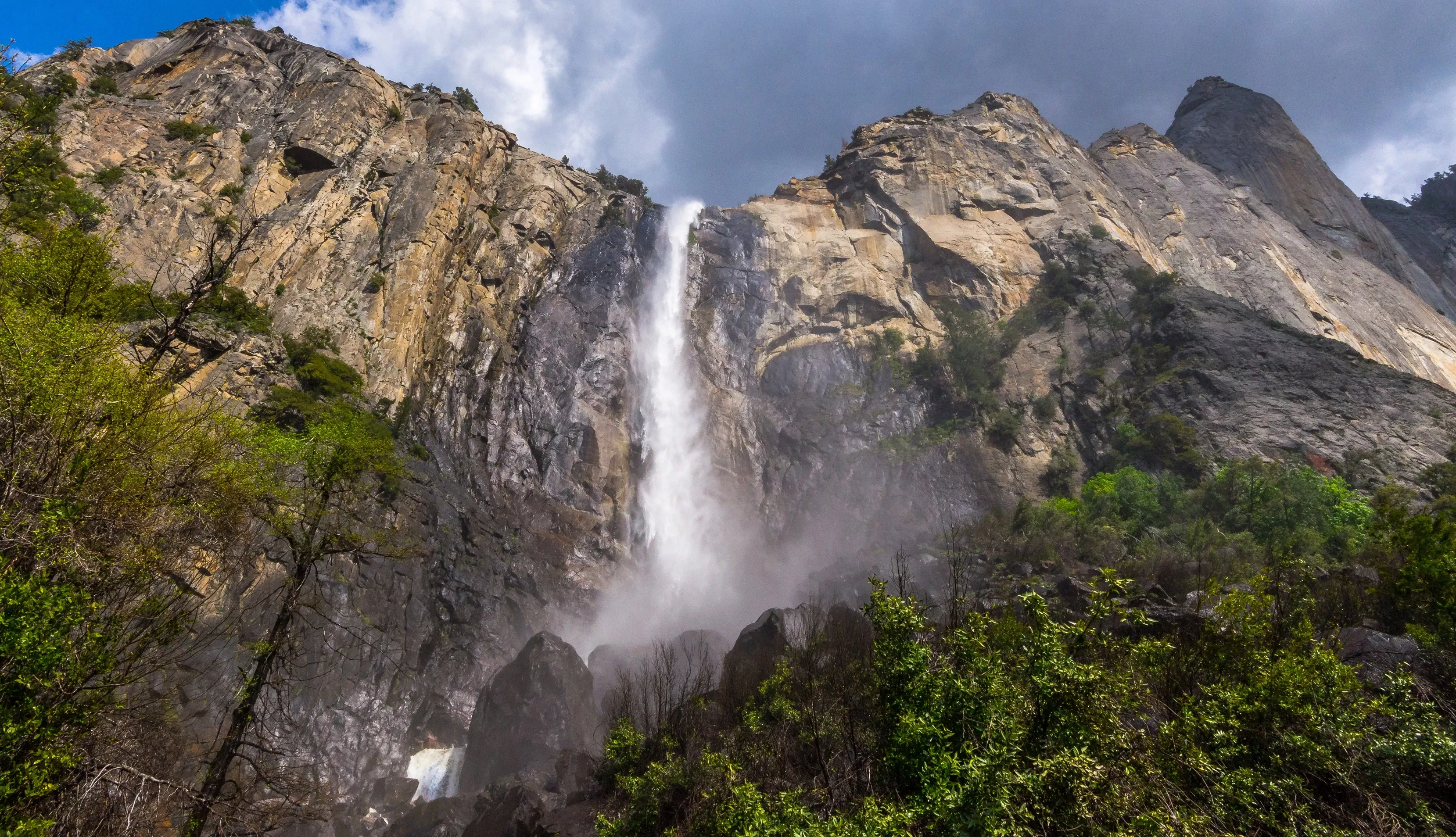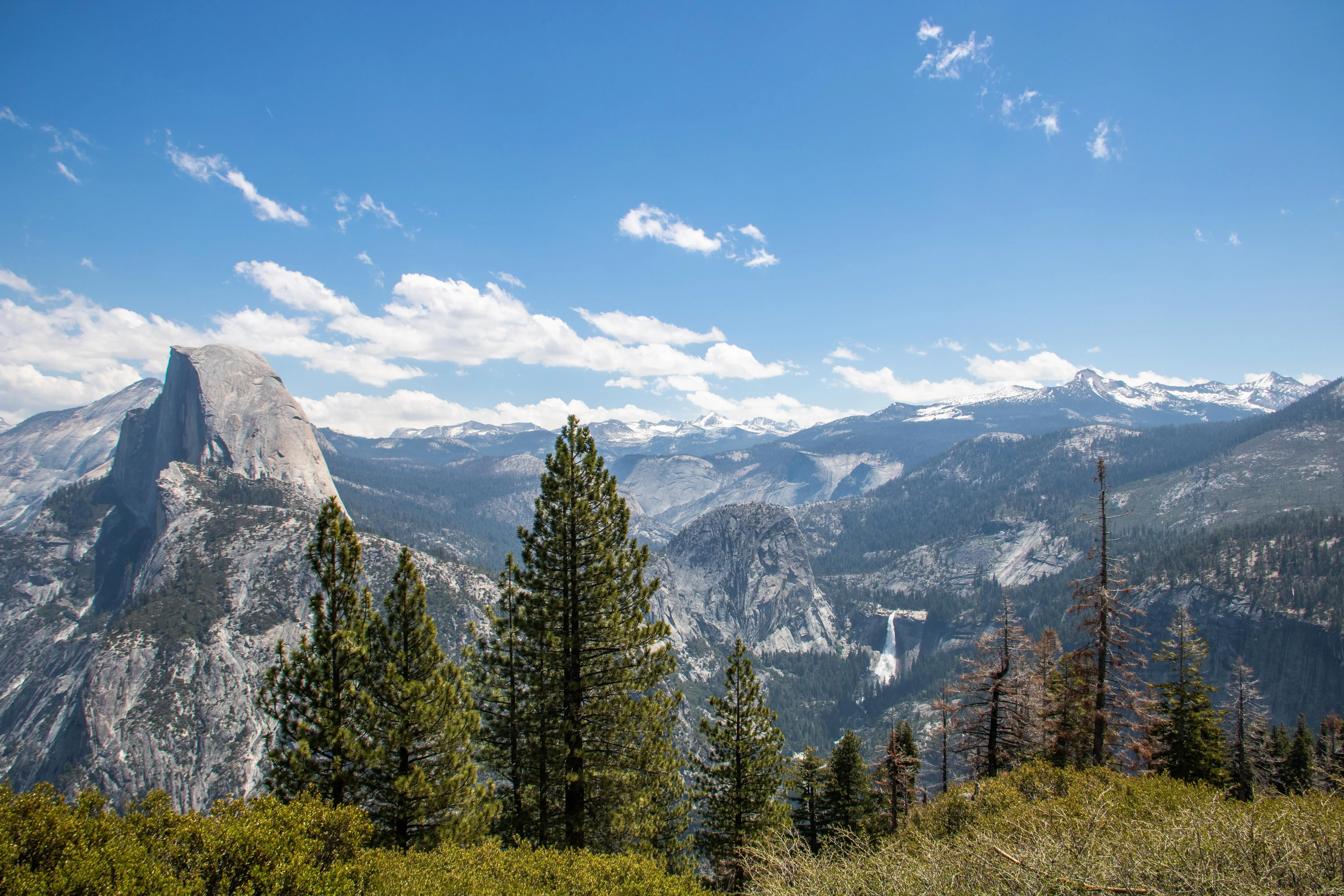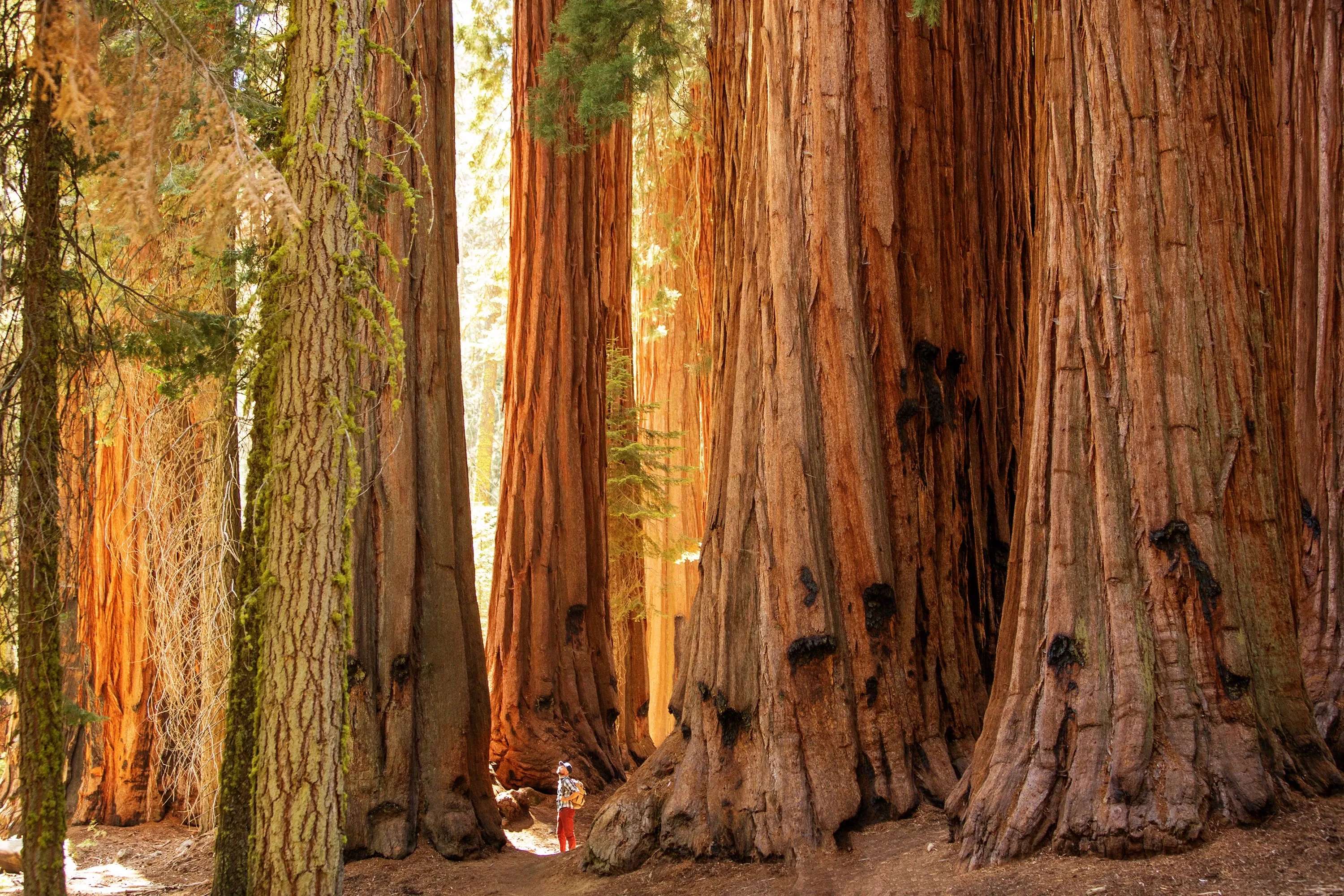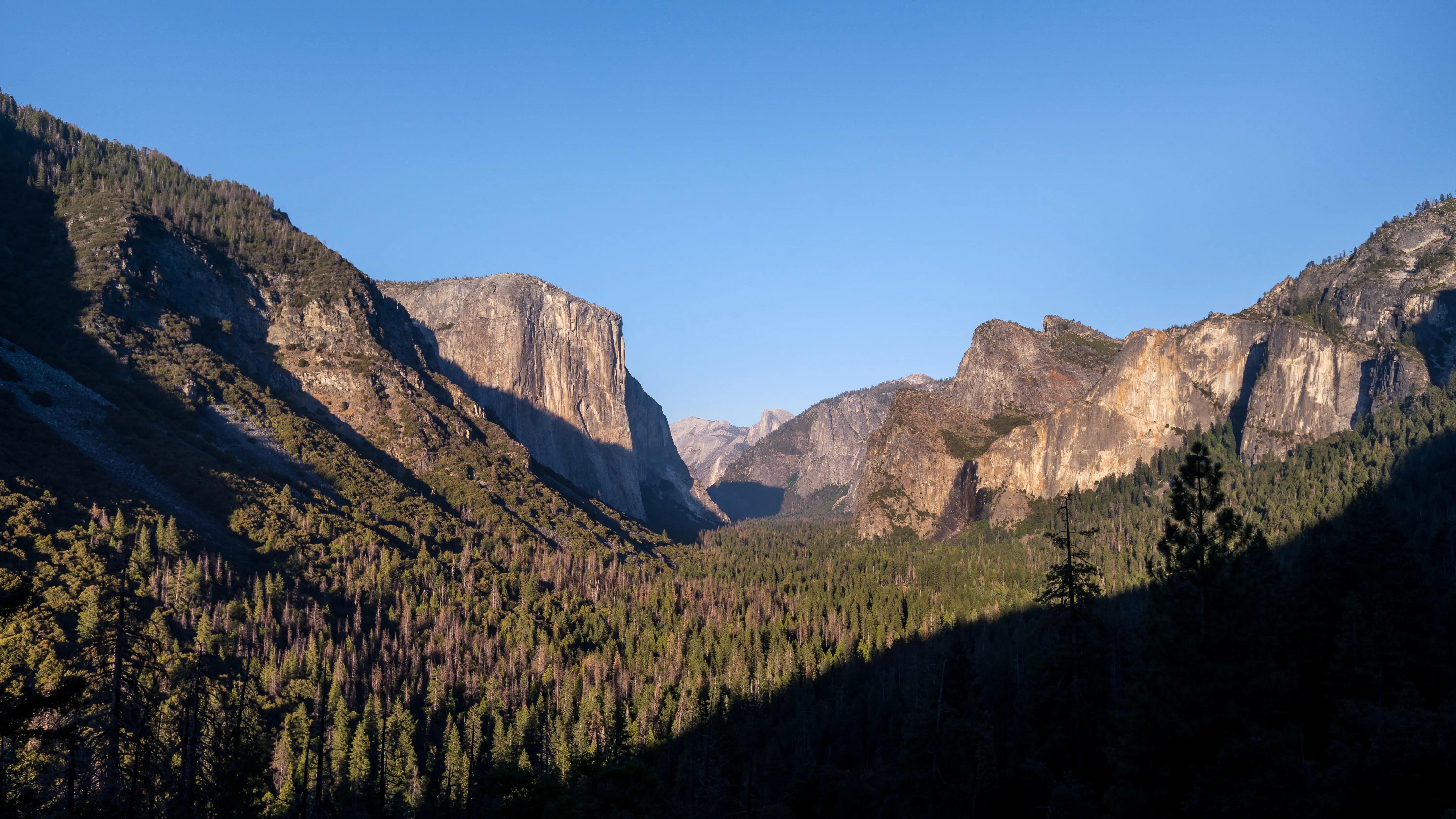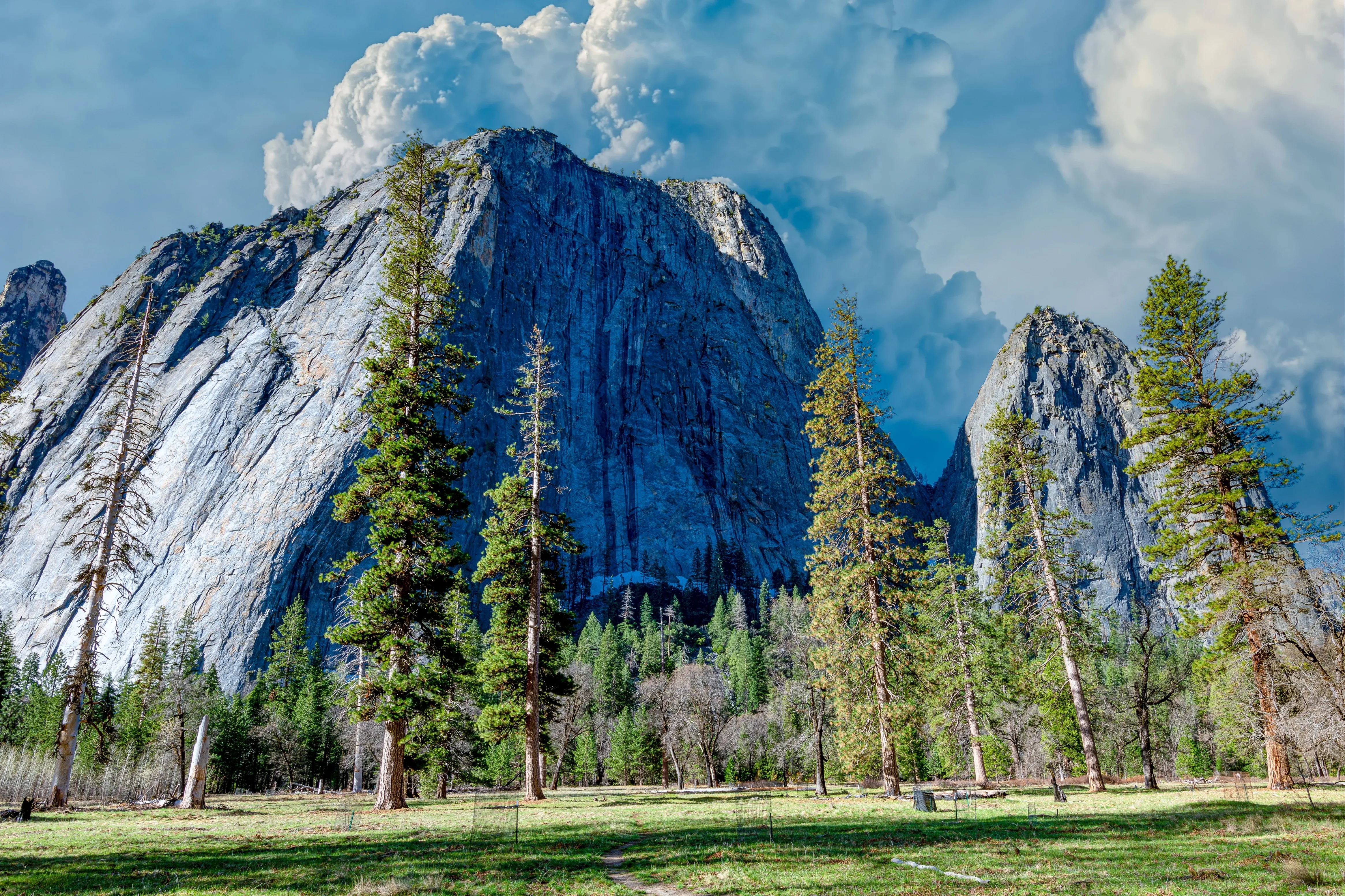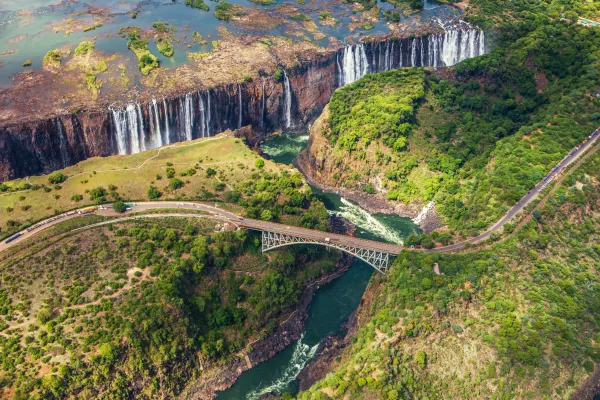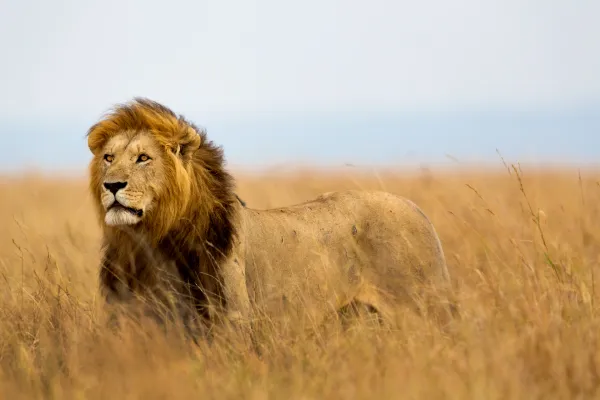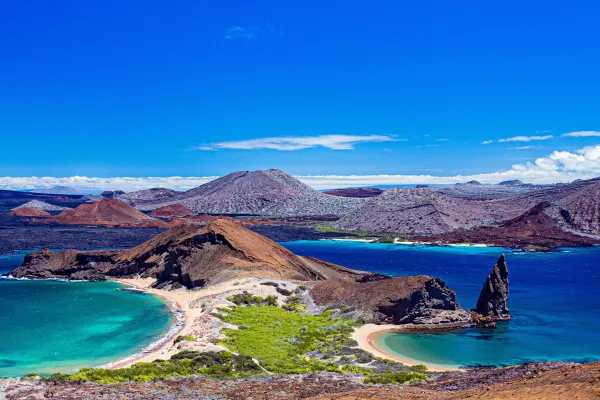Yosemite National Park: An inspirational wilderness
Dramatic rock formations, towering sequoia trees, and exceptional wildlife make Yosemite National Park an unforgettable nature destination. Sprawling across 3000 square kilometres of California’s Sierra Nevada Mountains, Yosemite National Park is among America’s most alluring reserves.
It is steeped in native Indian history and encompasses abundant wildlife and some of the country’s most awe-inspiring scenery. The reserve is dotted with iconic granite monoliths that shoot thousands of metres into the sky.
These stone behemoths are breathtaking to behold and attract rock climbers from all over the world. Yosemite National Park is also famous for its waterfalls, which are at their peak in May after the snow melts. Here is some helpful information if you’re heading there for the first time.
»It was like lying in a great solemn cathedral, far vaster and more beautiful than any built by the hand of man.«
What to do in Yosemite National Park
There is so much to see and do in the inspirational Yosemite National Park that covering everything in one short visit is impossible. However, there are some absolute must-sees for first-time visitors or those with limited time.
#1 Wawona Tunnel View
If you arrive via the park’s southern entrance, your first experience will be Wawona Tunnel. The tunnel itself is nothing to write home about - other than an impressive piece of structural engineering. However, the view at the exit point is absolutely breathtaking. It takes in all 12 kilometres of Yosemite Valley and three of its highlights
- Bridalveil Fall
- El Capitan
- Half-Dome
#2 Bridalveil Fall
From the Wawona Tunnel viewpoint, reaching Bridalveil Fall takes just a short drive and an easy walk. Yosemite National Park has countless waterfalls; however, Bridalveil Fall is among the most breathtaking. Crashing several metres down a sheer cliff face, Bridalveil Fall creates a dense/fine mist at its base. The original inhabitants of Yosemite National Park, the Ahwahneechee, believe inhaling the waterfall’s mist increases one’s chance of marriage.
#3 Taft Point and Sentinel Dome
These two viewpoints are located within a few kilometres of one another and can be reached via a relatively easy hike. The trail meanders for less than two kilometres upwards through forests before coming to Taft Point. This enormous granite slab overhangs a sheer drop of over 1000 metres and offers jaw-dropping views over the valley. Sentinel Dome is accessible via a short detour from the Taft Point trail. The view from the summit is arguably even more magnificent than Taft Point. It offers a 360-degree view of Yosemite, including all its most outstanding geological features. The viewpoint is most exceptional at sunset when the entire valley and all its granite monoliths are aglow. Just be sure to take a torch or headlamp for the walk back down.
#4 Four-mile Trail
Another exceptional hike in Yosemite National Park is the Four-mile Trail, which takes in Glacier Point and Washburn Point. At Glacier Point, you can gaze down over the whole valley and into the surrounding peaks. The panoramic views of the park from Washburn Point are equally jaw-droppingly beautiful.
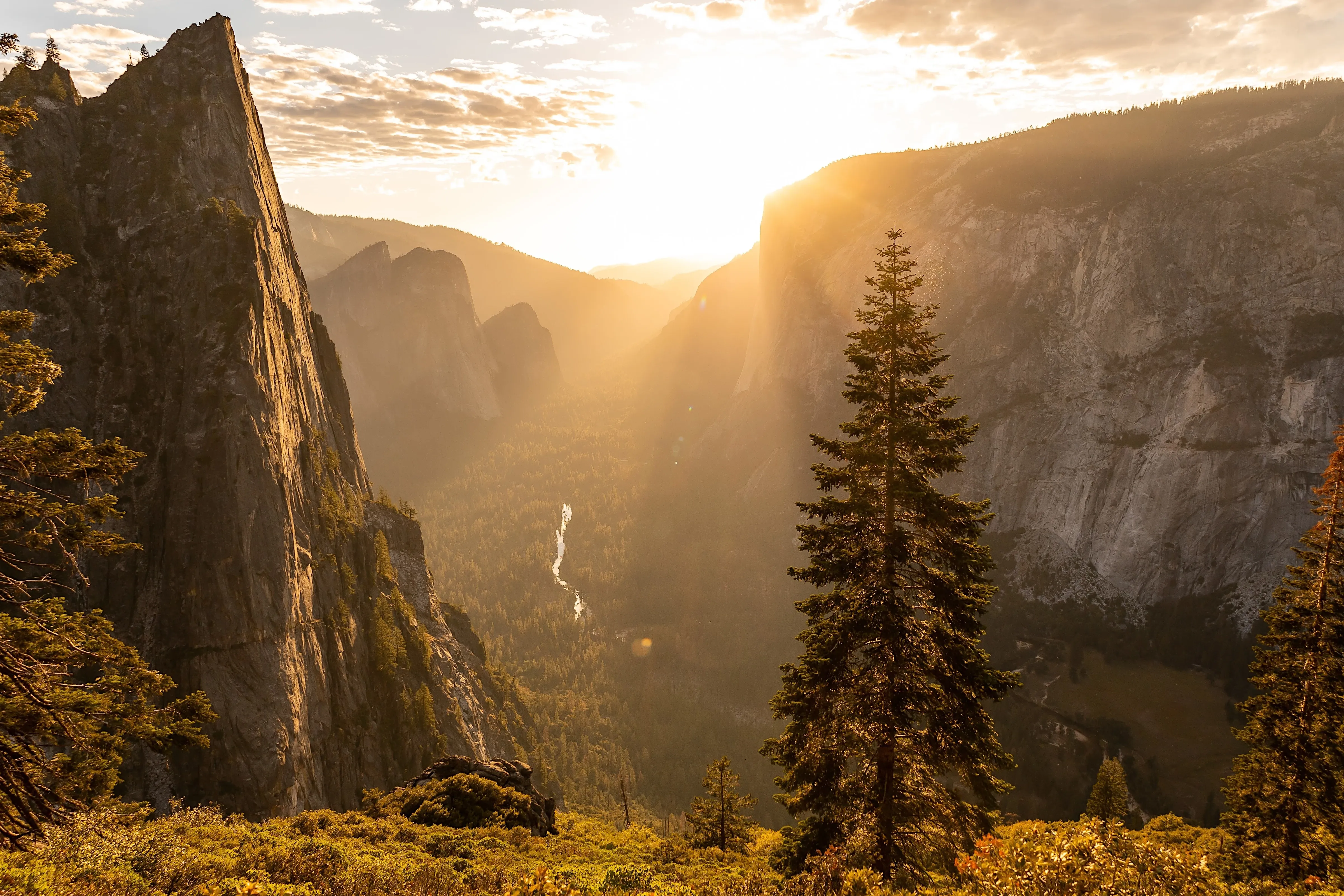
#5 El Capitan
El Capitan is one of Yosemite National Park’s most iconic sights - a sheer granite monolith measuring over 900 metres high. It has become a rock climbing Mecca since the first ascent in 1958 took a grueling 47 days. Today, you can relax in the comfort of El Capitan Meadow and watch modern climbers with high-tech gear achieve the same feat in just a few hours.
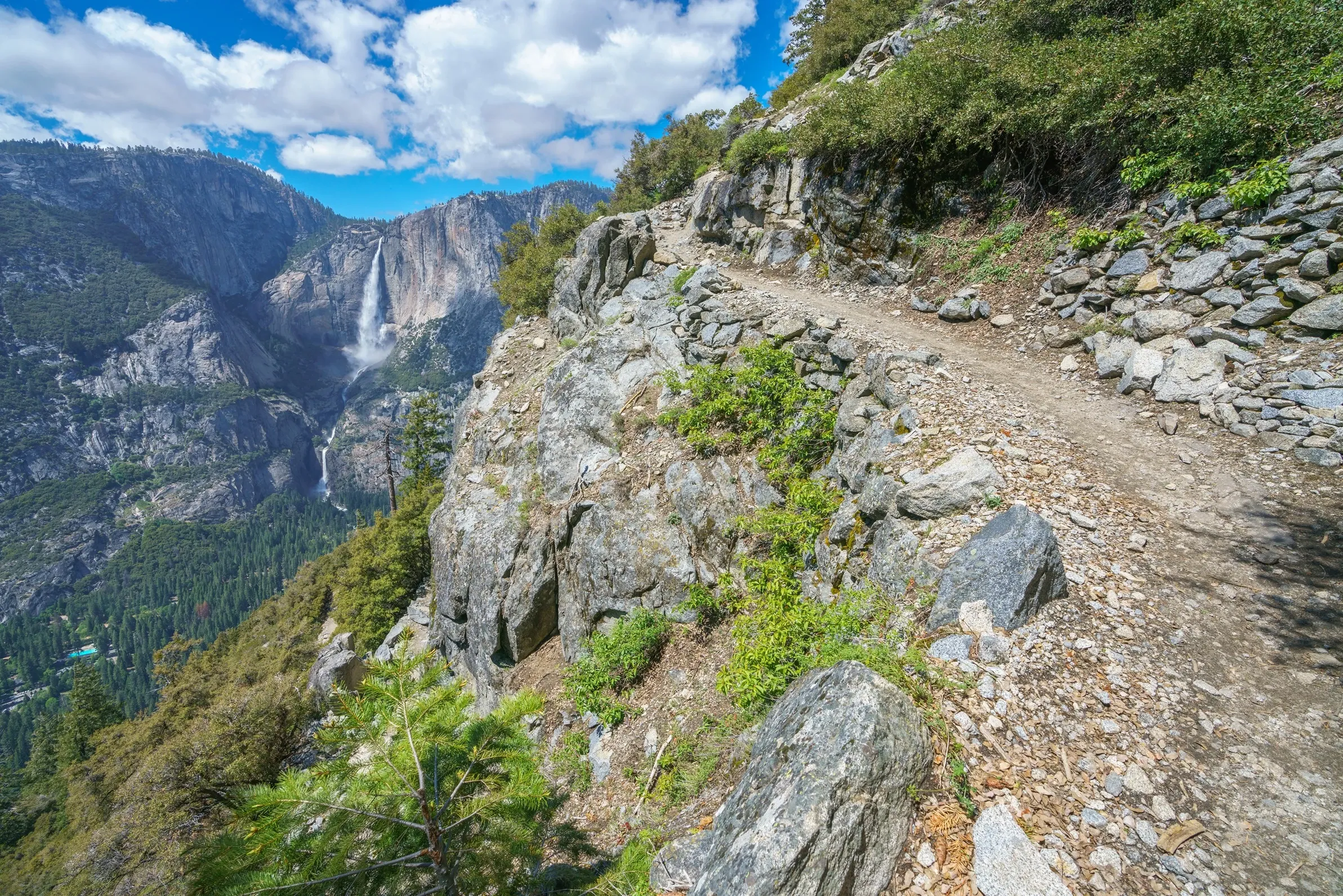
#6 Half-Dome
This unique stone monolith soars almost 1500 metres above the valley floor. Earthquakes and elemental erosion have broken this massive rock formation in half on one side while carving a perfectly rounded surface on the other.
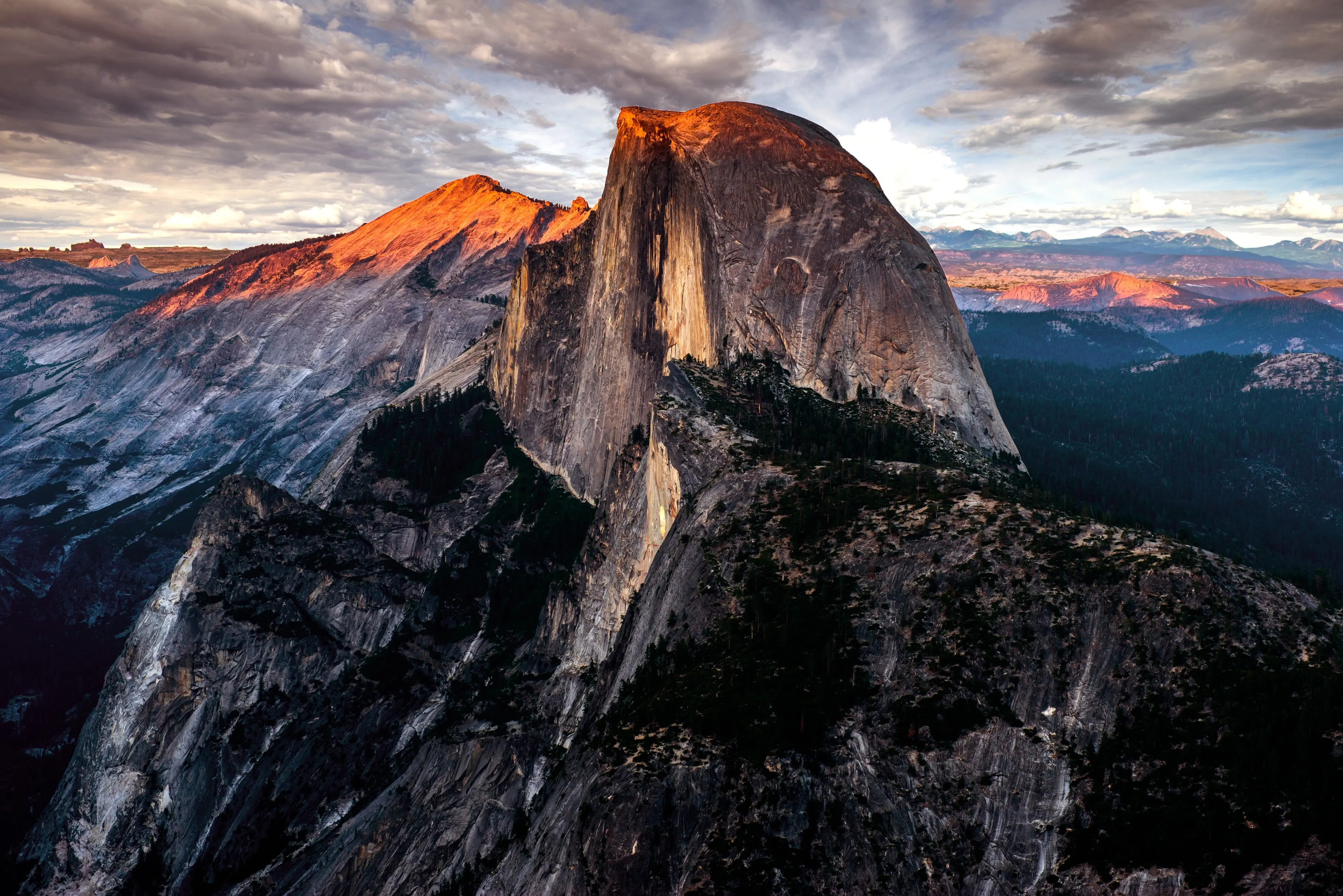
#7 Giant sequoia trees
Mariposa Grove is the park’s largest grove of giant sequoias, home to more than 500 trees. The grove’s most famous tree is the Grizzly Giant, which towers over 60 metres tall. Scientists estimate this ancient beauty is over 1,800 years old.
President Teddy Roosevelt was not the only historical figure to express his admiration for Yosemite National Park. In his 1912 book The Yosemite, the author John Muir wrote, ‘Everybody needs beauty as well as bread, places to play in and pray in, where Nature may heal and cheer and give strength to body and soul alike… this is a place that is far easier to feel than to explain. This is a place to wash the spirit clean.’ Today, the reserve’s wild beauty still awes and inspires visitors. Here are some top tips to make the most of your visit to the spectacular wilderness of Yosemite National Park.
Best time to go to Yosemite National Park
Most people visit Yosemite in the summer; therefore, it can get extremely crowded in these months. Plus, the heat is not optimal for doing long hikes. If you have the flexibility, the best time to explore the park is late spring. That way, you will avoid the worst of the masses and enjoy more temperate weather.
Additionally, spring is when the park’s waterfalls are at their most spectacular because the winter now has recently melted. However, if you are a fan of snow and ice, the winter months in Yosemite are a fairytale wonderland - albeit a freezing one!
Top tips for visiting Yosemite National Park
- Download a park map or pick one up at the park entrance. Internet reception can be spotty in parts of the park, so it is best to go prepared.
- Book accommodation early. It is most convenient to stay in hotels, rental cabins, or campsites within Yosemite National Park. However, these options get booked months in advance, so it pays to be ahead of the game on booking your lodgings
- If you have the budget, treat yourself to a stay at the historic Ahwahnee Hotel. Alternatively, book into one of the campsites around Yosemite Village for an unparalleled nature experience.
- The easiest way to get around the valley is to rent bikes. You will avoid traffic and hunting for parking and experience the park’s incredible nature and scenery more directly. The park’s free shuttles are another excellent way to get around.
Sign up for the newsletter
By clicking on “Subscribe now” I will subscribe to the Conscious Explorer newsletter with all the information about mindful travel. Information on the success measurement included in the consent, the use of the shipping service provider MailChimp, logging of the registration and your rights of revocation can be found in our privacy policy.
